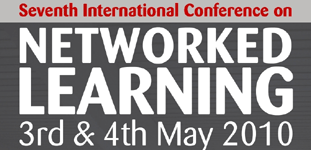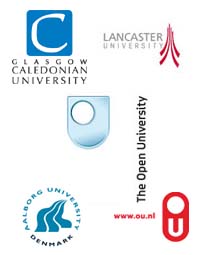

Web 2.0 for networked learning: from collaboration to shared cognition and knowledge networking
Matthew Allen
Curtin University of Technology, Perth, Australia
Abstract
This poster presents research-in-progress into the educational affordances of so-called Web 2.0 sites, services, with a particular emphasis on those applications that involve forms of shared human-machine cognition and that promote public knowledge networking. This research involves reviewing many hundreds of Web 2.0 tools and selecting approximately 50 for further analysis and exploration as learning applications. In doing so, the research will generate examples of unusual affordances provided by Web 2.0; it will also present a more structured categorisation of the kinds of uses and benefits of these tools. This approach is valuable because much current research and analysis of the impact of Web 2.0 on education, particularly higher education, has emphasised a relatively limited array of tools – principally blogs, wikis and social networking services – that offer educators and students opportunities for student-led collaborative work. Such opportunities involve strong emphasis on constructivist pedagogy: students’ interactions with each other, mediated via the Internet, are viewed as the positive benefit which networked learning can provide. However, Web 2.0 is far more than just collaboration, and associated shared self-expression. In particular, Web 2.0 includes many examples of services that take one form of input from a user and, rather than just sharing it with others, enable the transformation of that input into different forms, either as visualisations, maps, or other re-representations. Web 2.0 is also starting to see the development of knowledge-work engines that embody the concept of shared cognition, in which the service and the user cooperate in the production of some final knowledge output or which present to users knowledge that has already been processed more extensively than through simple searching. Web 2.0 is also closely associated with the idea that knowledge work is now networked and distributed; it involves users appropriating, creating and sharing knowledge products in a very public way, far beyond the narrow ‘audience’ of a particular course or program of study. The research presented in this poster will provide, firstly, examples of the Web 2.0 tools which emphasise these additional ways of exploiting the Internet for networked learning; secondly, the research will provide a first iteration of the overarching structure of categories and classifications which can be used to assess any proposed Web 2.0 application in terms of its affordances for learning as knowledge networking. By understanding these technologies, truly collaborative networked learning can be developed that blends with the emerging cultures of online behaviour increasingly common to contemporary student populations
| About NLC | Welcome Messages| Acknowledgwments | Conference Proceedings| Keynote Speakers| Index of Presenting Authors| Contact |